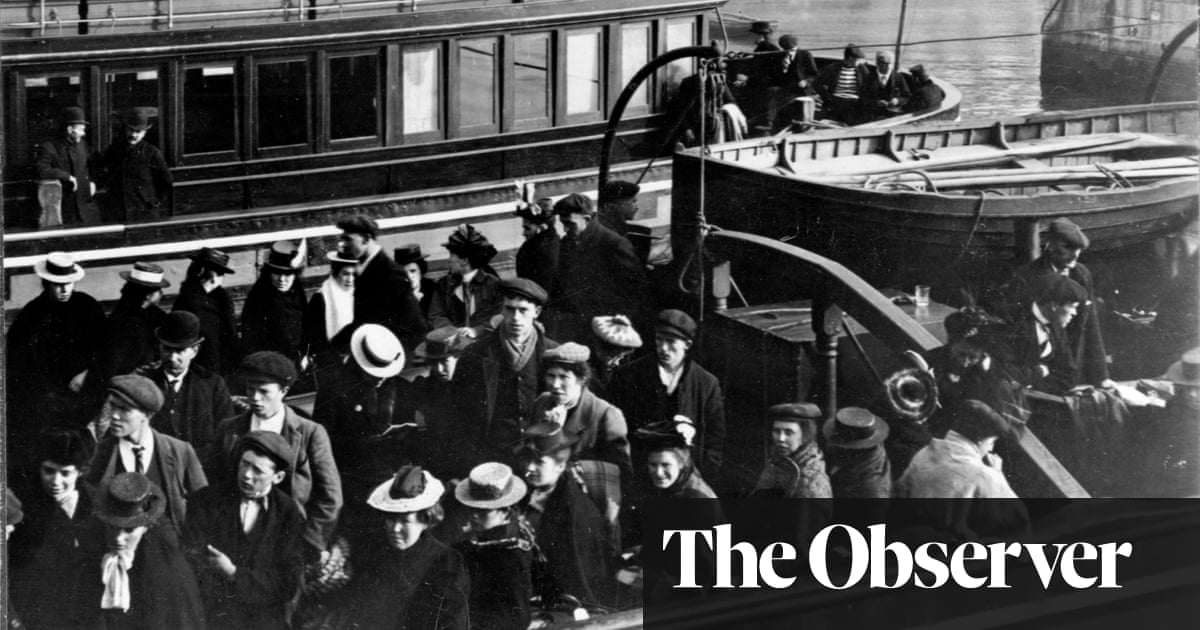
The millions of Irish girls and women who emigrated to North America in the 19th and early 20th centuries tend to be remembered, if at all, as domestic servants, cooks, wives and mothers.
A reputation for diligence and rectitude cast them as the unsung heroes of a diaspora that went on to conquer US business and politics.
But it turns out there is an untold chapter in the Irish emigrant experience, because many girls and women were in fact sex workers, thieves and drunkards, even killers, and they filled the prisons of Boston, New York and Toronto.
Two Northern Ireland-based academics have excavated their stories from police, court and prison records and coined a name for the transgressors: “Bad Bridgets”.
“That image of Irish women as sexually virtuous, good wives, good mothers and obedient domestic servants was not quite the lived reality for all,” according to Elaine Farrell of Queen’s University Belfast and Leanne McCormick of Ulster University. “In fact, we were completely overwhelmed by the sheer number of Irish women in records relating to crime and punishment.”
The historians have launched a five-part podcast series titled Bad Bridgets and are working on a book based on five years of research funded by the Arts and Humanities Research Council. The actor Siobhán McSweeney, who plays Sister Michael in Derry Girls, joined the podcast.
Bridget became a synonym in 19th-century American English for housemaid because so many women with that name worked in domestic employment.
When the historians started investigating the incarceration of Irish women in US and Canadian prisons they expected high numbers but were still shocked by what they found, McCormick said. “The numbers were so huge it was difficult to manage them.”
In the 1860s, Irish people made up about a quarter of New York’s population but Irish men comprised half of the male prison population and Irish women 86% of the female prison population.
Between 1860 and 1881, at least 5,260 Irish women were imprisoned in Toronto – almost double the combined number of Canadian, English and Scottish women jailed during that time. More than a third of the 12,514 women admitted to Boston’s House of Correction from 1882 to 1915 were Irish, but the Irish were just 17% of the city’s population.
Back in Ireland, it was assumed female emigrants were becoming good mothers and wives and bringing up good Irish-American children but many arrivals endured extreme poverty, isolation and loneliness, said McCormick. “It was thought emigrants might have drunk too much and nothing else. But of course people were up to all sorts.”
Irish women were the single biggest group of foreign sex workers in New York. A 19th-century survey of 1,238 foreign-born sex workers found that 706, just over half, were Irish, including Bridget Bell, who was sentenced to 12 months in prison in 1886 for visiting a brothel. She was 13. Another young servant was jailed briefly after joining a procession of 37 women, thinking they were going to church when in fact they were heading to jail for soliciting.
Alcohol abuse was common. Ellen Price was described as appearing in a Toronto court in 1865 “drunk as usual, with a flaming red feather in her hat”. Led away to serve 60 days in prison, she launched into a chorus of Rocky Road to Dublin.
Some women took to stealing. Margaret Brown, a pickpocket known as Old Mother Hubbard, was featured in an 1886 publication, Professional Criminals of North America. She tried to escape from a Chicago prison in 1877 by tying bedsheets together but fell and was badly injured.
A Chicago Post editorial in 1868 urged mass deportation: “The Irish fill our prisons … Putting them on a boat and sending them home would end crime in this country.”
Lizzie Halliday was infamous. Originally from County Antrim, she was convicted of multiple murders and became the first woman sentenced to die in New York’s electric chair. The sentence was commuted on grounds of insanity. Upon Halliday’s death in 1918, the New York Times called her the “worst woman on earth”.
Other cases invited pity. Rosie Quinn, aged 19, was sentenced to life in 1903 for drowning her baby in the lake in Central Park. “Some of the stories are absolutely heartbreaking,” said McCormick. “These women have nowhere else to turn.”
Ireland and Irish America have long preferred to dwell on diaspora successes, such as John F Kennedy’s rise to the White House, and Joe Biden’s election win has enhanced that narrative, said the historian. Those emigrants who found no American dream, only a nightmare, she said, largely vanished from memory in “collective amnesia”.
• This article was amended on 14 January 2021. Lizzie Halliday was the first woman to be sentenced to die in New York’s electric chair, but not the ‘only woman’ as an earlier version stated.










